
Whether you’re new to solar, or wanting to maximise your existing solar panels, here’s some quick tips to keep in mind:
Check out hundreds of easy-to-read articles, how-to guides and consumer reviews
Get quotes on home solar systems from Australia’s premier installation specialist
Compare 1,500-plus plans from 26 retail energy providers
As Australia’s most-trusted comparison site^ and biggest private energy comparator^^, we’ve been helping Aussies buy better since 2010
Our experienced team of energy experts is dedicated to helping you find the best solar products, plans and services
From solar energy guides to solar quotes and solar energy plans, we’ve got every step of the solar journey covered
Cut your power bills by using solar to generate electricity for your own use or to sell back to the energy grid
Reduce your reliance on the fossil-fuelled energy grid to cut the carbon emissions your energy use causes
Installing a solar system is cheaper than ever, with government incentives and rebates further reducing the cost
Solar energy is a type of renewable energy that’s created by converting heat and light from the sun into electricity or using it as a heat source. A home solar energy system typically uses solar panels and an inverter to collect sunlight and convert it into usable electricity.
This technology is called solar photovoltaic (PV) because solar panels contain cells called solar PV cells. It’s also possible to have a solar thermal system that turns sunlight into heat to heat the home or water in a hot water system.
The Australia Renewable Energy Agency says solar PV is the fastest growing type of energy generation in Australia.
Solar energy has two key benefits. It allows you to potentially reduce the amount of electricity you buy from an energy retailer, by using a solar system to produce electricity for use in the home.
This can deliver lower electricity bills. Solar energy also offers you the potential to reduce the amount of carbon emissions you’re responsible for, by reducing your reliance on grid electricity that’s primarily created from fossil fuels.
See the pros and cons of solar
There are three key features to focus on when comparing solar energy plans: solar feed-in tariffs, usage and supply rates and system size limits.
Weighing up these features based on how your household uses electricity will determine whether you could save more by using all of the electricity your solar system generates and paying for any additional grid electricity you need, or by storing the electricity your solar system generates so you can to export back to the grid for payment in the form of a feed-in tariff.
Your solar installer can help you decide which option may suit you best. You can also use Canstar Blue’s free solar plan comparison tool to compare features such as feed-in tariffs and usage and supply rates from leading energy providers in the solar space.
Canstar Blue research conducted in 2024 found that households with solar received $123 credit against their quarterly electricity costs, on average, when exporting their excess solar energy to the electricity grid in exchange for a solar feed-in tariff.
The savings you may make from installing solar panels in Australia will depend on the size of your system, the energy plan you choose, the amount of electricity your household uses and how it uses it.
Your solar installer can help you calculate what savings your household might make by installing a solar system.

Tara Donnelly is Canstar Blue’s Utilities Editor, leading the team that focuses on energy, telecommunications and consumer technology, across news, reviews and how-tos. Tara has spent more than a decade covering these topics in Australia, the US and Canada, which means she’s written about countless product launches and industry changes, including the rise of 5G, Australia’s ongoing NBN rollout, the recent years of energy price volatility and the rise of renewable energy sources.
Tara also has long experience in writing within the comparison industry, giving her great insights into the information consumers want when determining which plan or device will best meet their needs, while time spent in the financial sector before turning her talent to content lets her crunch the numbers on price with ease. Tara leads the coverage of Canstar Blue’s ratings and awards for the internet and phone sectors and is an expert at advising consumers on how to use comparison tools to find the best power, internet or phone deal.
Her expertise has seen her appear in national media including 9 News, 7 News, Sunrise, the ABC and The Sydney Morning Herald.
Tara has a Bachelor of Communications from the University of Canberra and is passionate about simplifying complex subjects so consumers aren’t just informed, they’re connected and confident.
You can follow Tara on LinkedIn and Twitter and read more of Tara’s published articles.
 Katrina Hasdell is an Energy Content Producer at Canstar Blue, where she covers Australia’s retail energy market. Katrina is dedicated to providing consumers with easy-to-read information on their energy options so they can get better deals on electricity, solar power and more.
Katrina Hasdell is an Energy Content Producer at Canstar Blue, where she covers Australia’s retail energy market. Katrina is dedicated to providing consumers with easy-to-read information on their energy options so they can get better deals on electricity, solar power and more.
She previously wrote content for Australia’s leading home services company, Pulse Home Services, while completing her BA in professional writing and publishing at Curtin University. When she’s not working, you’ll find Katrina with her nose in a book or playing a story-fueled videogame.
You can read more of Katrina’s published articles.
Meet the Editorial TeamBachelor of Commerce (Economics & Finance), Griffith University. Graduate Certificate in Data Science with Distinction, RMIT. Master of Data Science, Strategy and Leadership with Distinction, RMIT

Josh Sale leads Canstar’s research and product data functions that provide the basis for Canstar’s and Canstar Blue’s comparison tools, Value Rank calculations and expert Star Ratings, with oversight of teams of researchers, business analysts and data analysts across the energy, telecommunications and financial services and products sectors. Josh’s mix of tertiary qualifications in economics and finance and long experience as a Canstar company spokesperson means he’s not only able to transform complex calculations into consumer-friendly tools, rankings and awards, but is able to communicate them in a way that addresses Australians’ real-life personal finance and purchasing concerns.
Josh has analysed consumer markets in energy and telecommunications, and is keenly interested in what constitutes innovative products and services in those sectors. He regularly advises on bespoke research projects to continually improve Canstar and Canstar Blue’s understanding of consumer purchasing and use behaviour across energy and telco and is particularly interested in expanding the use of AI to provide consumers with information more quickly and efficiently.
Josh has shared his insights in print, radio and broadcast interviews with the likes of the Australian Financial Review, news.com.au and Money magazine because he believes knowledge is the first step toward empowerment. To the same end, while studying he facilitated peer-assisted study sessions for economics, and represented his University’s Business School in an academic committee.
When he’s not looking for new ways to leverage Canstar’s and Canstar Blue’s huge warehouse of product data and deep research expertise, Josh likes to research his own purchases in depth – just ask him about how he narrowed down his search for the perfect TV! Josh also uses his personal time to disappear down AI rabbit holes, when he’s not being a hands-on parent to two littlies.
Connect with Joshua Sale on Linkedin.
Bachelor of Business (Finance) with Distinction & Bachelor of Mathematics (Applied Computational Modelling) with Distinction, QUT

Breanna Gream is Canstar’s Data Insights Team Lead, responsible for developing the methodology and delivering Canstar Blue’s Value Ranking and determining Outstanding Value award winners for the energy and telecommunications sectors. Breanna completed a double Bachelor’s degree in Business, majoring in Finance, and Mathematics, majoring in Applied Computational Modelling, at the Queensland University of Technology.
Breanna enjoys using her skills to help consumers find more suitable utilities plans by transforming complex calculations into a Value Rank that provides a simpler way to compare different products. She most recently developed Value Ranking methodologies for wireless broadband plans and solar energy plans, to make it easier for households to identify plans that provide good value not just in terms of prices but also the features they offer. Breanna’s work on Value Ranking plays a key part in determining the winners of Canstar Blue’s Outstanding Value awards for electricity, gas, solar, phone and internet brands.
Many of the articles published by Canstar Blue feature calculations also undertaken by Breanna and her team, which converts pricing data into easy-to-understand cost forecasts and average price information for readers.
During her time at Canstar Blue, Breanna has developed an in-depth knowledge of product, market and regulatory changes across the electricity, solar, gas, internet and phone sectors, and particularly likes keeping Canstar Blue’s methodologies up to date and reflective of the ever-changing utilities environment.
When Breanna’s not crunching data, she’s likely to be somewhere remote – two of her favourite things to do are hiking and mountain climbing.
Connect with Breanna Gream on LinkedIn.
Meet the Research Team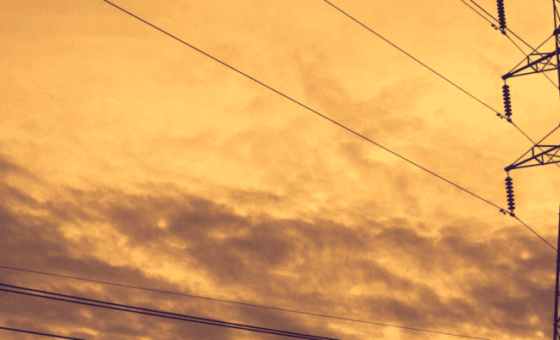
Best Solar Electricity Providers - August 13th
Keep up to date with new electricity plans, rates and discounts with Canstar Blue. We compare energy prices across NSW, QLD, VIC and SA.
– Read more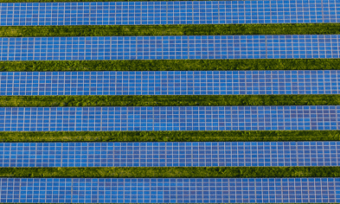
Solar Energy - July 28th
What’s a solar farm and how does it power your home? Learn more and see a list of solar farms in Australia at Canstar Blue.
– Read more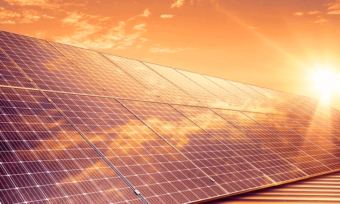
Solar Energy - July 18th
Canstar Blue reveals the average bill for households with solar in Australia. See costs and solar billing tips inside.
– Read more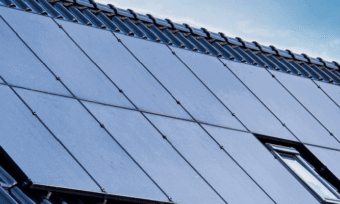
Solar Energy - July 16th
What is the sun tax and how does it affect households with solar? Canstar Blue explains what the sun tax means for solar exports and bills.
– Read more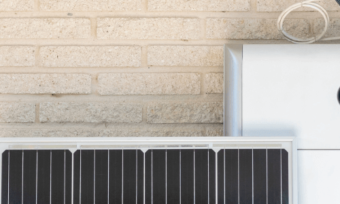
Solar Energy - June 17th
Learn how to connect solar panels to a solar battery safely and effectively with the help of a licensed solar installer.
– Read more